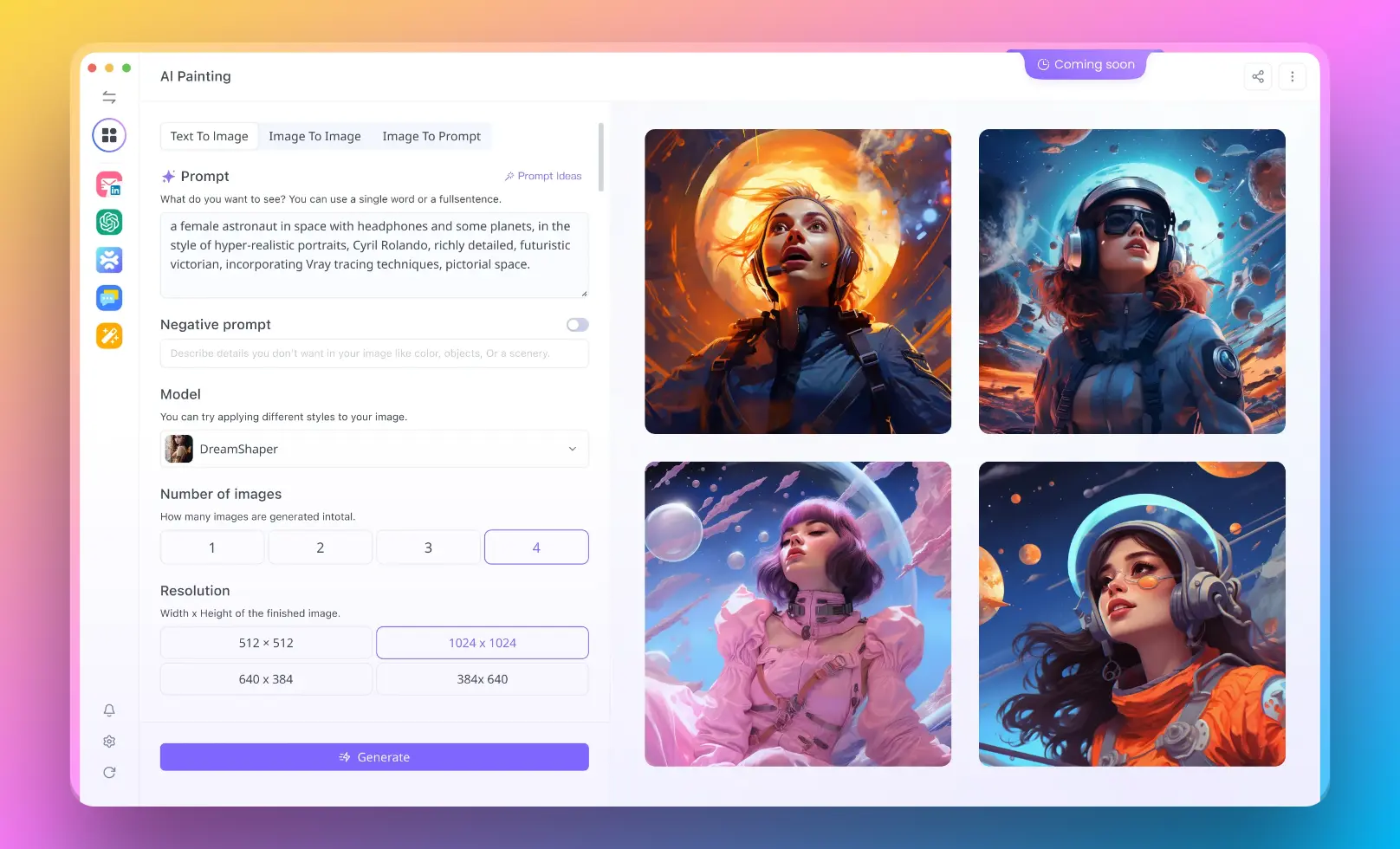Then, You cannot miss out Anakin AI!
Anakin AI is an all-in-one platform for all your workflow automation, create powerful AI App with an easy-to-use No Code App Builder, with Deepseek, OpenAI's o3-mini-high, Claude 3.7 Sonnet, FLUX, Minimax Video, Hunyuan...
Build Your Dream AI App within minutes, not weeks with Anakin AI!

In recent months, Manus AI has emerged as a powerful general AI agent designed to transform thoughts into actions. With its ability to handle complex tasks autonomously, it has captured the attention of professionals seeking AI automation solutions. However, its proprietary nature and potential cost barriers have many users looking for open-source alternatives that offer similar capabilities without the restrictions.
This article explores the top 10 open-source alternatives to Manus AI, examining their features, strengths, and how they stack up against this popular autonomous AI agent. Whether you're a developer, researcher, or business professional, these tools can help you implement powerful AI agent capabilities in your projects.
1. AutoGPT
Key Features:
- Autonomous task execution without user intervention
- Customizable workflows through a block-based interface
- Robust memory and reasoning capabilities
- Continuous operation capability
- Support for multiple LLM backends
AutoGPT stands as perhaps the most established open-source AI agent framework in the ecosystem. Originally launched in early 2023, it has evolved from a simple experimental tool to a comprehensive platform for creating, deploying, and managing AI agents.
What makes AutoGPT particularly compelling is its architecture that allows agents to execute complex tasks autonomously by breaking them down into smaller, manageable steps. The platform features an intuitive user interface that enables both technical and non-technical users to build custom agents through a block-based approach, where each block performs a specific action.
AutoGPT now offers both a classic version and a newer platform approach, allowing developers to choose between simplicity and advanced capabilities. With extensive documentation and a large community of contributors, it remains one of the most accessible entries into the world of autonomous AI agents.
2. BabyAGI
Key Features:
- Task prioritization system
- Self-improving capabilities
- Memory management for contextual awareness
- Task-driven approach to problem-solving
- Highly customizable for specific use cases
BabyAGI provides a simpler but equally powerful approach to autonomous AI agents. Created by Yohei Nakajima, this framework focuses on task management and prioritization, making it ideal for projects requiring sequential workflow processing.
Unlike more complex systems, BabyAGI's architecture is relatively straightforward, making it accessible to developers with basic Python knowledge. It excels in breaking down complex objectives into manageable tasks and continuously reprioritizing based on importance and dependencies.
What sets BabyAGI apart is its elegant simplicity that doesn't sacrifice functionality. The system can maintain context across task execution while continuously learning from completed tasks to improve future performance. For users who find AutoGPT overwhelming, BabyAGI offers a more approachable entry point into autonomous AI agents.
3. LangChain Agents
Key Features:
- Modular component architecture
- Extensive tool integration capabilities
- Multiple agent types (ReAct, Plan-and-Execute, etc.)
- Memory systems for contextual awareness
- Robust documentation and community support
LangChain has established itself as one of the most versatile frameworks for building AI applications, with its agents functionality standing out as a particularly powerful feature. Unlike standalone agent platforms, LangChain Agents are built on a broader framework that facilitates various LLM-powered applications.
The flexibility of LangChain's modular design allows developers to construct agents with different reasoning approaches, from simple tool-users to complex planners. These agents can access a vast ecosystem of tools and integrations, from search engines and databases to specialized APIs.
What makes LangChain particularly valuable is its production-readiness, with robust error handling, memory management, and extensive documentation. For developers looking to integrate agent capabilities into larger applications, LangChain provides a battle-tested foundation with the flexibility to grow with project requirements.
4. LangGraph
Key Features:
- Graph-based agent architecture
- Advanced control flow for complex decision-making
- Visual workflow builder
- Support for multi-agent collaboration
- Seamless integration with LangChain
LangGraph represents the next evolution of agent frameworks from the creators of LangChain. This specialized framework focuses on building controllable agents through a graph-based architecture that allows for sophisticated control flows and decision-making processes.
What distinguishes LangGraph is its ability to model complex agent behavior as a series of states and transitions, enabling more predictable and controllable agent actions. The framework excels in scenarios requiring complex reasoning or collaborative multi-agent systems.
LangGraph's visual interface for designing agent workflows makes it accessible to users with limited programming experience while providing developers with the power to implement advanced agent patterns. For applications requiring precise control over agent behavior, LangGraph offers sophisticated orchestration capabilities without sacrificing flexibility.
5. CrewAI
Key Features:
- Multi-agent collaboration framework
- Role-based agent architecture
- Process management for complex workflows
- Human-in-the-loop capabilities
- Streamlined API for quick implementation
CrewAI takes a unique approach to AI agents by focusing on collaborative multi-agent systems. Rather than building a single all-purpose agent, CrewAI allows developers to create teams of specialized agents, each with defined roles, responsibilities, and expertise areas.
The framework's role-based architecture is inspired by human team structures, with agents able to collaborate on complex tasks by sharing information and delegating subtasks. This approach has proven particularly effective for complex problems that benefit from diverse perspectives and specialized knowledge.
CrewAI's streamlined API makes it remarkably easy to implement sophisticated agent teams with minimal code. For projects requiring collaborative problem-solving or simulating organizational dynamics, CrewAI provides a purpose-built solution that excels at coordinated agent behavior.
6. MetaGPT
Key Features:
- Software development specialization
- Multi-agent workflow orchestration
- Built-in software development methodologies
- Visualization of agent processes
- Structured output formats (code, diagrams, documentation)
MetaGPT differentiates itself by focusing specifically on software development workflows. This specialized framework implements a multi-agent approach where different agents handle distinct phases of the software development lifecycle, from requirements analysis to testing.
What makes MetaGPT particularly valuable is its incorporation of software engineering best practices. The framework guides agents through established methodologies, ensuring that outputs follow industry standards for quality and documentation.
For organizations looking to accelerate software development through AI assistance, MetaGPT provides a purpose-built solution that generates not just code, but comprehensive software artifacts including design documents, diagrams, and test cases. This focus on complete software outputs makes it uniquely valuable for development teams.
7. OpenInterpreter
Key Features:
- Code execution in local environment
- Multi-language support (Python, JavaScript, Shell, etc.)
- Interactive learning and execution
- Enhanced security measures for code execution
- Integration with local development environment
OpenInterpreter offers a distinctive approach among AI agents by focusing on secure local code execution. This tool allows users to interact with a natural language interface that can understand requests, generate appropriate code, and execute it in the local environment.
The framework emphasizes safety and user control, with transparent operations that allow users to review code before execution and understand exactly what actions are being performed. This approach bridges the gap between natural language interfaces and traditional programming.
For developers, data scientists, and technical professionals, OpenInterpreter provides an invaluable tool for rapid prototyping, data analysis, and system management through natural language commands. Its ability to work within existing development environments makes it particularly useful for enhancing developer productivity.
8. XAgent
Key Features:
- Hierarchical planning architecture
- Advanced reasoning capabilities
- Tool learning and adaptation
- Collaborative agent teams
- Extensive plugin ecosystem
XAgent is a relatively newer entrant to the open-source agent ecosystem but has quickly gained attention for its sophisticated architecture. The framework implements a hierarchical planning approach that allows agents to develop complex multi-step plans and adaptively revise them during execution.
What distinguishes XAgent is its emphasis on advanced reasoning capabilities, enabling agents to handle more complex and abstract tasks than many alternatives. The framework's flexible architecture supports both autonomous operation and collaborative teamwork between multiple specialized agents.
XAgent's growing ecosystem of plugins and tools makes it increasingly versatile for various applications. For users seeking cutting-edge agent capabilities with strong reasoning foundations, XAgent offers a powerful platform with active development and research backing.
9. OWL
Key Features:
- Web browsing and research capabilities
- Human-like exploration patterns
- Content summarization and extraction
- Multi-modal understanding
- Task-oriented browsing focus
OWL (Open Web Learning) specializes in autonomous web browsing and research capabilities. This focused agent framework excels at navigating the web to gather information, extract relevant content, and synthesize findings in response to research questions or information needs.
Unlike general-purpose agents, OWL's specialized capabilities make it particularly effective for research tasks, content discovery, and information gathering. The framework implements sophisticated browsing patterns that mimic human exploration, enabling more effective navigation of complex websites.
For applications requiring automated research, content monitoring, or information gathering, OWL provides specialized tools that surpass the web capabilities of more general frameworks. Its ability to understand and process diverse web content makes it valuable for knowledge-intensive tasks.
10. ANUS (Autonomous Network Utility System)
Key Features:
- Lightweight modular architecture
- Network-oriented capabilities
- Low resource requirements
- Simple implementation
- Open integration approach
Despite its unfortunate acronym, ANUS represents a promising lightweight alternative for building autonomous agents. This framework emphasizes simplicity and efficiency, making it suitable for resource-constrained environments or projects requiring minimal overhead.
The system focuses on providing essential agent capabilities through a highly modular architecture that allows developers to incorporate only the components they need. This approach results in agents that can run efficiently even on modest hardware.
For developers seeking to implement basic autonomous capabilities without the complexity of larger frameworks, ANUS provides a streamlined solution that prioritizes practical functionality over advanced features. Its growing community continues to expand its capabilities while maintaining its lightweight core.
Conclusion
The open-source AI agent ecosystem offers a rich variety of alternatives to proprietary solutions like Manus AI. From comprehensive platforms like AutoGPT to specialized tools like MetaGPT and OpenInterpreter, these frameworks provide diverse approaches to implementing autonomous AI capabilities.
When choosing an open-source alternative, consider your specific requirements, technical expertise, and application domain. General-purpose frameworks like AutoGPT and LangChain offer flexibility for diverse applications, while specialized tools may provide superior performance for specific use cases.
As this rapidly evolving field continues to advance, these open-source alternatives are likely to narrow the gap with proprietary solutions further, making powerful autonomous AI accessible to a broader range of users and applications. Whether you're building a personal assistant, research tool, or business automation solution, these open-source frameworks provide valuable building blocks for the next generation of AI applications.



